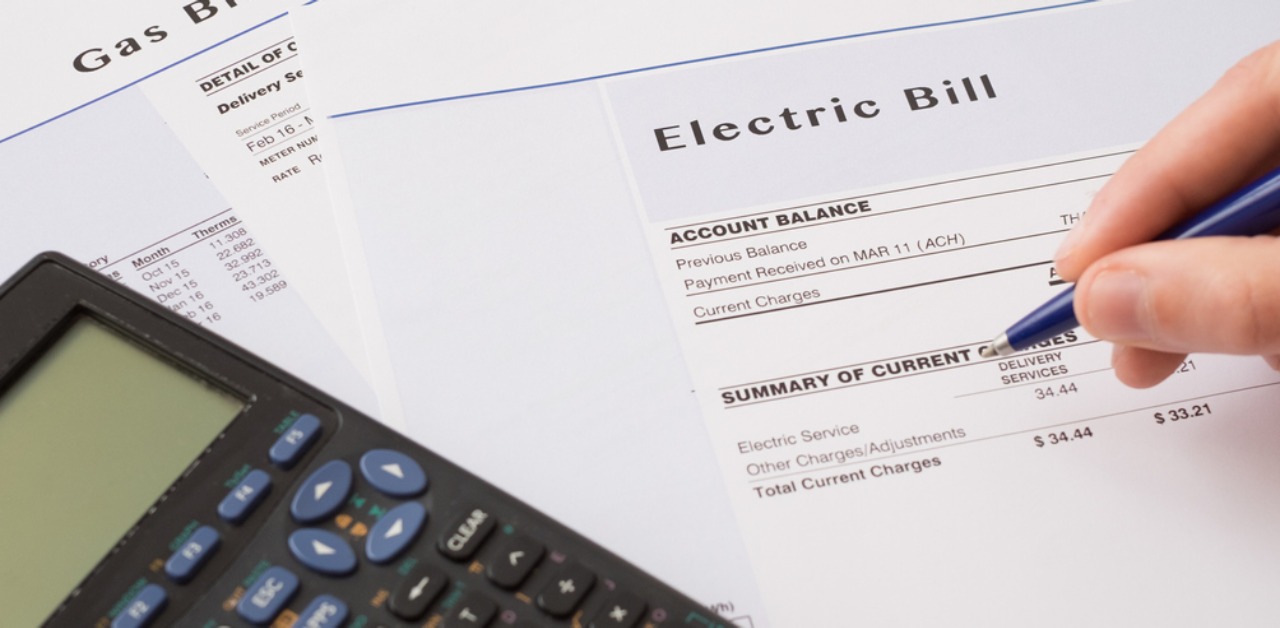Trends
How to Fight Inflation: Top 10 Ways to Save Money
How to Fight Inflation: Top 10 Ways to Save Money: Most people’s purchasing power has decreased due to today’s high inflation rates…

How to Fight Inflation: Top 10 Ways to Save Money: Most people’s purchasing power has decreased due to today’s high inflation rates. To make sure they can pay their necessary bills, many customers are changing the way they purchase. Fortunately, you may use a variety of innovative tactics to cut costs and keep up a good standard of living even when prices rise.
Even though inflation is at its highest level since the early 1980s, many people, particularly those who live paycheck to paycheck, may find it difficult to save any money at all.
According to the majority of analysts surveyed, inflation will either continue to be high or increase even more quickly. It is challenging for Americans to find extra money for savings because of the sky-high consumer costs and inflation that continues to outstrip pay growth and savings rates.
Despite this, it’s crucial to save — or keep your savings intact — especially in light of the possibility of a recession. There are steps you can do to lessen the impact of inflation on your finances, safeguard savings, and improve your general financial health up until the beast of inflation is tamed.
READ MORE: 10 Ways How to prepare for a Recession In the USA
How to Save Money During High Inflation
There are numerous strategies to save money when inflation is high. While interest rates are rising, implementing several of these tactics will help you keep more money in your bank account.
Here are the best ways to save during inflationary periods and prevent allowing rising interest rates to ruin your own financial stability.
5 Ways to Save Money

How to Fight Inflation: Top 10 Ways to Save Money
We’re all looking to cut costs. Everybody has a different approach to saving money, whether it is by forgoing the weekly $4 mocha latte or delaying an exotic family vacation.
To come up with ideas for the greatest methods to save money in your daily life, use this money-saving advice.
1. Get Rid of Your Debt
Start with the debt if you’re trying to save money through budgeting but are still heavily indebted. Not persuaded? You can readily determine this by adding up how much money you spend each month on debt repayment.
When you are no longer required to pay interest on your debt, you can easily put that money into savings. You have a few options for debt consolidation to improve your ability to pay it off, including a personal line of credit.
2. Put yourself first
Every paycheck, set up an automatic withdrawal from your checking account into your savings account. Don’t cheat yourself out of a sound long-term savings strategy by only setting aside $50 every two weeks or $500.
3. Plan your savings
Imagining what you are saving is one of the finest methods to save money. Set saving goals and a deadline if you need some inspiration to start saving. Want to put 20% down on a home purchase in three years?
Now that you’ve set a goal, you know how much money you’ll need to set aside each month to reach it. Make your goal using the Regions savings calculators!
4. Invest to Save
Since utility expenses rarely decrease over time, weatherize your home now before it’s too late. Call your utility company and request an energy audit, or look for a licensed professional who can assess the energy efficiency of your entire home.
From simple adjustments like sealing windows and doors to the installation of new insulation, siding, or ENERGY STAR high-efficiency appliances and goods, this may be done. Over time, you might save thousands on utility expenditures.
5. Electricity Savings
Your water heater’s thermostat can be lowered by 10°F to save energy consumption by 3-5%. Additionally, installing a tankless or on-demand water heater can save you up to 30% more money than using a conventional storage-tank water heater.
READ MORE: Top 10 Best Long-Term Investments For Building Wealth
How to Fight Inflation

It seems like everything is getting more expensive these days, don’t you think? Your preferred cup of coffee, a loaf of bread, and gas prices all appear to have increased in cost. My coffee is the same size, but the price tag keeps growing.
You are not having hallucinations. The dollar doesn’t travel as far as it once did because of inflation. It annoys me as a customer. Being a small business owner can be really frightening.
The good news is that there are strategies for fighting inflation that could, in the end, make you money. These three actions can be taken right away to safeguard your future.
bargain for lower costs for regular expenses
Andres Lares, the managing partner at Baltimore’s Shapiro Negotiations Institute, asserts that you can bargain for a better price on nearly anything to offset increased pricing.
Lares suggested starting by establishing a rapport before inquiring about any discounts or programs you might be eligible for. “Asking is not harmful.”
The APR on your credit card, as well as streaming services, insurance premiums, cable bills, cell phone plans, and gym memberships, are classic examples of regular expenses that are frequently changeable.
According to surveys, customers who contact and request a reduced rate nearly often succeed, which can be a terrific tool for cutting monthly spending.
Put off making large purchases
Not all things will always cost more. It might be advantageous to wait if a price increase is only temporary.
Neil Gilfedder, senior vice president of portfolio management at Edelman Financial Engines, advised delaying purchases that were not urgently required.
For instance, used automobile and truck prices, which had previously contributed significantly to inflation increases, are currently up 31.9% year over year but are beginning to decline, down 1.5% in August.
How to Fight Inflation: Top 10 Ways to Save Money
- Invest
- Pay Down Debt
- Reduce Energy Bills
- Get a Side Hustle
- Cancel Unused Subscriptions
- Buy Cheaper Alternatives
- Ask for a Raise
- Budget Your Savings
- Use Cash Back Apps
- Set Spending Priorities
1. Invest

How to Fight Inflation: Top 10 Ways to Save Money
It is feasible to make money even though investing during an inflationary period can be riskier than during a bull market when most asset classes tend to prosper. Gains from your investments may be equal to or greater than inflation.
Because saving account interest rates have a hard time keeping up with inflation during inflationary times, generating larger yields from your long-term deposits becomes increasingly important. While investing carries more risk, there is more potential to generate higher profits.
Inflation-linked I-Bonds and TIPS, two types of U.S. Treasury Bonds, have competitive returns and low risk. If you want a fixed income or have the money to invest for at least a year to avoid early redemption costs, they can be a great option for investments.
It may also be worthwhile to look into dividend stocks or blue-chip stocks with sound financial standing and robust business structures. A company’s likelihood of producing profitable outcomes for shareholders is higher when it has pricing power that can withstand cost rises.
It is crucial to keep a diversified portfolio that reduces risk regardless of macroeconomic circumstances. The All-Weather Portfolio, which is designed to cover many investment scenarios, can provide you with some useful insights.
2. Pay Down Debt

How to Save Money During High Inflation
Another way how to fight inflation and save your money is to Pay Down Debt.
Another strategy to improve your financial status is to pay off your debt. When interest rates are low and there is no inflation, it may be simple to afford the monthly payments.
However, if the Federal Reserve rises interest rates, your savings may be jeopardized due to the potential increase in costs. It might be difficult to pay for your basic living expenditures while keeping up with your debt payback commitments as rising prices and interest rates squeeze your wallet.
Consider making additional debt payments whenever you can, rather than falling behind on your payments and perhaps harming your credit history. These payments lower your lifetime interest rate expenses and hasten your loan repayment.
You will eventually pay off debt and stop making that regular monthly payment. Your available funds to use in other budget categories rise with each reward.
Making sacrifices to raise the money can be necessary for speedy debt repayment. You may, for instance, raise your income, reduce your spending, or sell any unnecessary items.
Prioritizing debt with the highest interest rates, like credit cards, will help you the most because more of your monthly payment goes toward paying interest rather than lowering the balance of your loan. Once these loans are repaid, you can switch to your lower interest rates.
You can prepare for the most efficient payments using a variety of debt repayment methods.
Many people find the debt snowball strategy to be quite helpful. With this method, you concentrate on paying off the loan with the smallest sum first. To cut your monthly expenses, you apply your excess payment to the next smallest debt after each successful payback.
Start with the lower balance first, for instance, if you have two credit cards with balances of $700 and $1,000. Once that is paid off, you can pay off the $1,000 loan with the extra money you would have used to pay off that obligation.
3. Reduce Energy Bills

How to Fight Inflation
Utility costs are recurring costs. In the summer and winter, when you’re using the most energy to cool and heat your home, your expenses may be at their highest.
Utility rates are rising due to greater inflation, but there are a number of strategies to reduce your electricity costs.
Some of the top choices are:
- Using a programmed thermostat installation.
- When heating, lower the thermostat setting.
- Setting the thermostat higher when cooling.
- Reducing energy use during peak times.
- Utilizing energy-saving lighting and equipment.
- Removing the plug from unused devices.
- washing clothes in cold or warm water as opposed to hot.
- “Winterizing” your home will protect it from the cold and drafts.
The only method to lower your bill is not merely to use less energy. A community solar scheme can be provided by your energy company as well.
With the help of these programs, you may take advantage of solar energy without having to pay high setup fees or put up solar panels on your properties. You can get solar credits in exchange for a subscription fee to help offset the cost and lower your monthly bill.
A Levelized billing model is yet another option for momentary respite. In order for you to pay a flat cost rather than a variable amount, your utility company averages your power bill over the previous 12 months. But if future utility prices and use rise, it stands to reason that your bill will also.
4. Get a Side Hustle

How to Fight Inflation: Ways to Save Money
Getting a side gig is another way How to Fight Inflation: Ways to Save Money. Since you can only cut monthly spending so much, sometimes it makes sense to earn more money. You can make extra money in your leisure time through a side business.
You can pursue a variety of online and local ideas. Each calls for a certain level of expertise and time commitment. Their potential for remuneration likewise varies.
You don’t need specialized knowledge or a lot of time to earn money online by taking online surveys and playing games. But the reward for your work will only be a few bucks.
While requiring more time, such as deliveries or freelancing, they can pay similarly to part-time jobs while providing more scheduling flexibility.
The following are some options with low initial costs:
- Babysitting
- walking a dog
- shopping for clues
- selling unused apparel and equipment
- video and audio transcription
- Tutoring
The convenience of working when you want and stopping when you need a break is the beauty of side jobs. For instance, when you are saving for a significant financial goal, you can take on an extra job for a few months.
5. Cancel Unused Subscriptions

How to Save Money During High Inflation
A cost-effective way to gain access to premium material and specialty services is through recurring subscriptions. The chances are that you’re not making the most of some of your memberships if you have more than one.
Because of this, underutilized services may cause you to spend less money than necessary.
Fortunately, there aren’t usually any cancellation fees for services. This implies that you can easily cancel them once you’ve looked over your spending patterns and located the services you don’t need.
There are other options than canceling subscriptions to reduce spending. Additionally, you might be able to bargain for a reduced price on essential services.
You may, for instance, change to a more affordable phone plan. While existing users are required to pay more for older plans, some firms offer better prices to new clients. You might be able to secure a better deal as a reward for your loyalty with a quick call or email.
6. Buy Cheaper Alternatives

How to Fight Inflation: Ways to Save Money
A simple strategy to save money as the cost of goods and services rises is to switch from an expensive product to less expensive alternatives.
Cable TV is one of the best solutions to take into account for significant savings. According to research, the average cable cost for the best content is between $100 and $200.
Sling, on the other hand, offers sports and news channels for as little as $35 per month. Your favorite channels can be delivered using this TV streaming app, which is the most dependable, over your high-speed home internet connection. Additionally, the quality is superb.
For instance, the Sling Orange bundle, which includes ESPN, Disney, CNN, and TBS streaming, costs $35 per month. If you prefer watching reality TV or professional sports, the Sling Blue plan is $35 per month. FOX and the NFL Network are included with this package, but ESPN is not.
If your budget permits, you can sign up for the $50 Orange & Blue combo package to receive the entire lineup and additional discounts. Every package comes with 50 hours of cloud DVR.
There are other ways to save a few dollars than canceling your cable or satellite TV service.
Other strategies for locating less expensive but equivalent alternatives include:
- Purchasing generic goods and medicines
- Selecting less expensive holiday spots
- Evaluating competitors’ prices
- Utilizing meal delivery kits as opposed to dining out
- Consignment stores are preferable to “brand new” purchases.
You can protect your wallet from the effects of inflation by learning how to negotiate better pricing on goods and services.
7. Request a Raise

How to Save Money During High Inflation
Employers typically provide raises of up to 3% each year to keep up with inflation. However, given that the official inflation rate is close to 8%, that precedent is insufficient.
In a competitive labor market where there is a high demand for workers, you have more negotiating leverage to obtain a raise. In most cities, “Help Wanted” signs are frequently seen at various sites.
If your coworkers are now departing for better possibilities, your boss might be more open to paying raises. Be sure to have some strong arguments for why you should be paid more before asking for a raise.
You can decide on the desired salary increase amount after performing your preliminary investigation. If your boss is unable to increase your pay, perhaps they might give another benefit, like a more accommodating schedule.
Each company has its own dynamics, so this dialogue may lead to a number of possibilities for enhancing your job position.
8. Budget Your Savings

How to Fight Inflation
One of the ways to fight inflation and have good savings is to budget your savings. Saving money must be a priority in your budget. An ideal initial step is to intentionally save money for upcoming costs or a rainy day to make sure you are being diligent with your savings.
Additionally, conserving money can enable you to avoid going into debt or postponing large purchases in the future.
After examining your spending habits, deciding to set up an automatic transfer of $100 from each paycheck into your savings account can be a simple place to start.
Another choice is to follow the 50/30/20 rule, which states that 20% of your income should go toward savings, if at all possible.
If either of these initial recommendations is too expensive, figure out which of your expenses you can reduce. Then, rather than applying your cost savings to another purchase category, you utilize them to boost your savings account.
9. Use Cash Back Apps

How to Fight Inflation
While you can cut back on luxuries like holiday trips and ice cream outings, you still need to purchase necessities for your family.
Cash back apps let you make shopping rebates in addition to using coupons and watching for bargains. You may save money on groceries, gas, and other items by using these rewards apps. It costs nothing to sign up, and there is usually no minimum balance required to start cashing out or exchanging your points for gift cards.
You may be able to save on specific items or your entire purchase, depending on the promotion. It’s best to test out a few at your chosen stores since the offers can vary depending on the app.
For instance, while certain apps are better suited for in-store transactions, others are more suited for online ones. You may enhance your savings by using a variety of apps.
If you’re interested in learning about the best cashback app, I suggest you read this article. Top 10 Best Cash Back Apps and Websites You Should Know
10. Set Spending Priorities

How to Save Money During High Inflation
You might need to set spending priorities if the cost of living rises. You must assess the most crucial budget items to make sure you are providing enough funds to meet their requirements.
Your initial necessary payments should go toward:
- Traveling expenses
- Food
- Housing
- Insurance
- Medicine
- The minimal borrowing payments
- Utilities
In order to have more money for optional activities, you can look for ways to reduce your essential spending.
Your other priorities could be:
- kid care
- Education
- Entertainment
- Extra payments for debt
- Home enhancements
- Investing
- future purchases
Inflation creates more financial trade-offs since there is a greater incentive to make sensible financial decisions with every dollar spent.
For instance, since the net gain may be bigger than during periods of inflation, you may prefer to pay down debt rather than invest your extra income.
Additionally, it’s likely that if you allocate more money to essential needs, discretionary expenses like eating out or purchasing movie tickets would need to occur less frequently.
Making a spending plan that combines your short-term and long-term priorities can be done with the aid of a budgeting app. These technologies make it simpler to see your financial future.
They can also point out areas for improvement by comparing your actual spending to your projected spending.
Summary
Here is the summary list of How to Fight Inflation: Top 10 Ways to Save Money
- Invest
- Pay Down Debt
- Reduce Energy Bills
- Get a Side Hustle
- Cancel Unused Subscriptions
- Buy Cheaper Alternatives
- Ask for a Raise
- Budget Your Savings
- Use Cash Back Apps
- Set Spending Priorities
